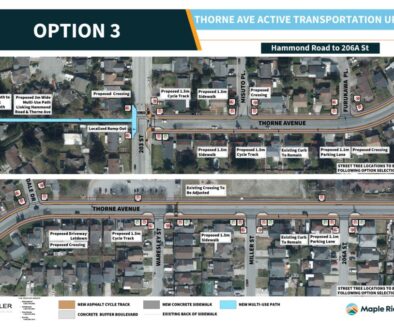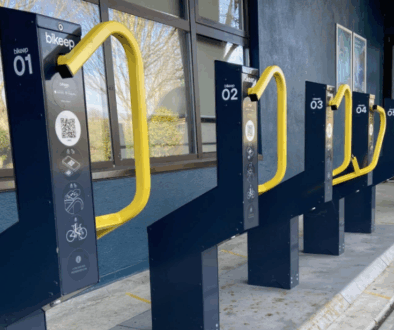Take a hike, take a bike in future?
By Gary McKenna
THE TRI-CITY NEWS – Nov. 30/11
Walking, cycling and public transit are emphasized in an update to Coquitlam’s strategic transportation plan, a document that seeks to
increase alternate modes of commuter travel in the municipality. Currently, 82% of trips in the city are made by automobile, a number engineering staff said they hope will drop to 70% by the end of the plan’s 20- year horizon. Of the 30% of commuters expected to use alternative travel methods by 2031, 12% of trips will be done on foot, 3% by bicycle and 15% by public transit.
“There is more of an emphasis on sustainable ways of travelling,” said Catherine Mohoruk, the city’s manager of transportation. “We are hoping our future targets are met.” One of the ways the city plans to increase the number of walking trips is by expanding its sidewalk coverage. To build sidewalks on all city streets would cost upwards of $100 million, Mohoruk said, an amount the city cannot afford.
The transportation plan calls for $43 million to be spent to build 150 km of new sidewalks over the next 20 years in strategically placed pedestrian areas such as the city and neighbourhood centres. Mohoruk added that enhanced pedestrian facilities, including crossing
lights, benches and landscaping, can also help increase the number of people moving around the municipality on foot. Cycling also factors prominently in the city’s future transportation plans. Currently, 1% of all trips in the municipality are made by bike, a number
city staff expect to increase to 3% by 2031. In order to meet the target, staff is proposing increasing the number of bike lanes from the current 40 km of routes to 150 km. The change, Mohoruk said, would put 70% of Coquitlam’s urban area 500 m or less from a bike
route. The plan also looks at increasing transit coverage and the overall frequency of trips, particularly in the southwest area and
the northeast connections with city centre. Mohoruk said increased connections between Surrey and Coquitlam over the new Port Mann Bridge would also be required. But in order for the strategic plan to be effective, co-operation is required from various governing
agencies, particularly TransLink, said Coun. Brent Asmundson, chair of the city’s engineering committee and a bus driver. More discussions need to take place with the regional transit authority and the city needs to have a say over what service levels are required in
Coquitlam, he said. “We need to tell TransLink what our desires and issues are and push the matter,” he said, “not wait for them to come in and do a transit plan for us and tell us what they are going to do.” The cost of the strategic transportation plan is between $221 million and $237 million over 20 years but much of that money would come from external sources such as TransLink and ICBC, and through development cost charges. Staff said the city would only pay 20% of the overall costs from property tax revenues.
gmckenna@tricitynews.com


